On December 12…
“It is confidence in the men and women who administer the judicial system that is the true backbone of the rule of law. Time will one day heal the wound to that confidence that will be inflicted by today’s decision.”
~ John Paul Stevens
Associate Justice, U.S. Supreme Court
[Bush v. Gore]

1941 – Adolf Hitler ordered 50 leading members of the Nazi party to a meeting in his private rooms at the Reich Chancellery in Berlin.
They were present to hear Hitler declare the imminent destruction of the Jewish race. The meeting marked a turning point in the Nazi regime’s attitude towards the Jewish people. It was part of a shift from propaganda, intimidation and attacks to outright and planned extermination.
Because the meeting took place in private rooms rather than Hitler’s office, no official record of it exists. However, an entry in the diary of Joseph Goebbels confirms it.
“With respect of the Jewish Question, the Fuhrer has decided to make a clean sweep. He prophesied to the Jews that if they again brought about a world war, they would live to see their annihilation in it. That wasn’t just a catchword. The world war is here, and the annihilation of the Jews must be the necessary consequence.”
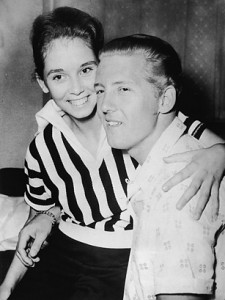
1957 – In one of the biggest scandals in rock music history, Jerry Lee Lewis married Myra Gale Brown.
Six months after they were married, Sun Records decided to send Jerry Lee on a tour of England. No one told Myra not to mention the marriage to anyone. She talked to a reporter at the airport.
“I’m Myra, Jerry’s wife,” she told Daily Mail reporter Paul Tanfield.
Tanfield followed up with a question for Lewis.
“And how old is Myra?”
It was at this point that Jerry Lee must have realized the rest of the world might take a somewhat skeptical view of his third marriage, because the answer he gave was a lie: “Fifteen.”
Myra Gail Lewis was actually only 13 years old, a fact that would soon come out along with certain other details, such as the fact that she was Jerry Lee’s first cousin (once removed) and that the pair had married five months before his divorce from his second wife was made official.
Lewis did a few concerts, but the pressure from the British press became overwhelming and the tour was stopped after just three shows. The scandal nearly ruined Jerry Lee’s career.
By the time he got back to the States, his records were being ripped from store shelves, his appearances canceled and his record sales declined.
Lewis was mystified at all the negative publicity.
“I plumb married the girl, didn’t I?”
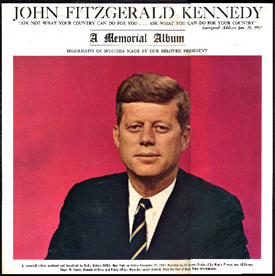
1963 – John Fitzgerald Kennedy – A Memorial Album became the fastest-selling record of all time when 4 million copies, each selling for 99 cents, were sold in six days – between December 7-12.
The memorial tribute was recorded November 22, the day President Kennedy was assassinated in Dallas.
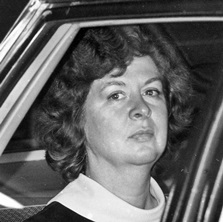
1975 – Sara Jane Moore pleaded guilty to the charge of attempting to assassinate President Gerald Ford on September 22, 1975.
She was sentenced to life in prison, but in 2007, at the age of 77, she was released on parole.
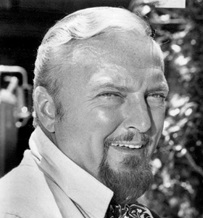
1976 – Actor/Singer Jack Cassidy died when a dropped cigarette ignited a fire in his apartment while he slept. He was 49.
On Broadway, he won a Tony Award for Best Featured Actor in a Musical (She Loves Me), and on television, he won an Emmy Award for Outstanding Single Performance by an Actor in a Leading Role for the film The Andersonville Trial.
Cassidy, the father of teen idol David Cassidy, also made numerous guest appearances on many television series, including multiple appearances on Columbo.
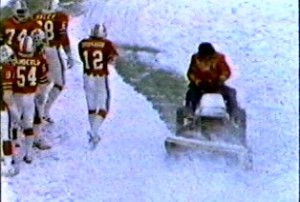
1982 – The Snowplow Game: The night before a game between the Miami Dolphins and the New England Patriots, heavy rains had soaked the Astroturf surface at New England’s Schaefer Stadium.
To make matters worse, a heavy snowstorm began shortly after the game began. As a result, an emergency ground rule had been established for this game: the officials could call time-out, and allow the ground crew to use a snowplow to clear the yard markers.
The two teams remained scoreless late into the fourth quarter. With 4:55 left to go in the game and on-field conditions worsening, snowplow operator Mark Henderson – a convict on work release – was sent onto the field with his tractor. No one thought it was suspicious, assuming the plow would go straight across the 20-yard line.
Instead, the plow suddenly swerved over to the 23-yard line; the exact spot from which New England’s John Smith would kick. Miami coach Don Shula protested furiously but the field goal was good and the Patriots won the game by the final score of 3–0.
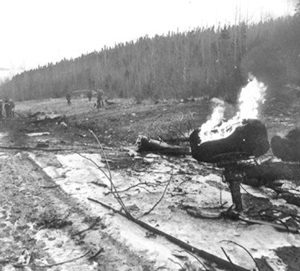
1985 – Arrow Air Flight 1285 crashed after takeoff in Gander, Newfoundland, killing all 256 people on board, including 236 members of the United States Army’s 101st Airborne Division..
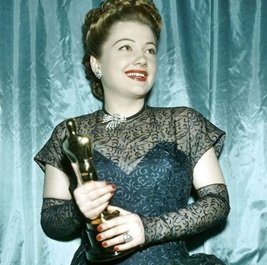
1985 – Academy Award winning actress Anne Baxter died after suffering a stroke. She was 62.
She received an Academy Award nomination for Best Actress for the title role in All About Eve and won the Academy Award for Best Supporting Actress for her in The Razor’s Edge.
Many film fans will remember her for her role as Egyptian queen Nefertari in Cecil B. DeMille’s award-winning The Ten Commandments.
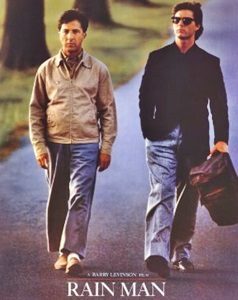
1988 – Rain Man, starring Dustin Hoffman, Tom Cruise and Valeria Golino, premiered in New York City.
The film won four Oscars at the 61st Academy Awards (March 1989), including Best Picture, Best Original Screenplay (Barry Morrow and Ronald Bass), Best Director (Barry Levinson), and Best Actor in a Leading Role (Hoffman).
Casting Factoid: The script for the film was sent to Dustin Hoffman and Bill Murray, envisioning Murray in the title role and Hoffman in the role eventually portrayed by Cruise.
Hoffman had other ideas. He wanted the title role.
“Bill Murray didn’t read the script and Dustin did and called and marked his territory,” co-writer Morrow recalled. “Hoffman was in first, so the search for his brother began and ended with Tom because Bill was going to be Rain Man or nothing.”

1989 – Leona Helmsley, nicknamed the “Queen of Mean” by the press, received a four-year prison sentence, 750 hours of community service, and a $7.1 million tax fraud fine in New York.
For many, Helmsley became the object of loathing and disgust when she quipped that “only the little people pay taxes.” Federal Judge John Walker publicly reprimanded her, saying, “Your conduct was the product of naked greed and the arrogant belief that you were above the law.”
Helmsley was sent to jail in 1992 and was released in 1994. In 2002, Helmsley, whose billionaire husband Harry died in 1997, again found herself in court after being sued by Charles Bell, a former employee who accused Leona of firing him solely because he was homosexual. A jury ordered Helmsley to pay him more than $11 million in damages.
Helmsley died in August 2007 at the age of 87. She left $12 million to her dog.
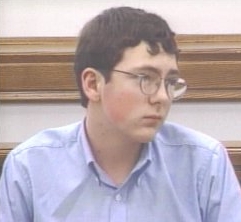
1997 – Fourteen-year-old Michael Carneal was indicted as an adult on three counts of murder and five counts of attempted murder for the shooting of his classmates at Heath High School in West Paducah, Kentucky.
Eleven days earlier, Carneal had pulled out a pistol and fired 11 shots into a group of students in the school’s lobby.
Although charged as an adult, Carneal’s young age made him ineligible for the death penalty.
He pleaded guilty but mentally ill, and was sentenced to life in prison with a possibility of parole in 25 years.

1997 – Federal Judge Barbara S. Jones sentenced Autumn Jackson to 26 months in prison for her role in a $40 million extortion plot against comedian Bill Cosby, the man she claimed was her father.

2000 – In Bush v Gore, the U.S. Supreme Court overturned the Florida Supreme Court, ruling 5-4 that there would be no further counting of Florida’s disputed presidential votes.
The following day, Gore conceded the presidential election to Bush.

2003 – Mick Jagger received a knighthood at Buckingham Palace.
When Jagger agreed to accept the honor, fellow Stone Keith Richards criticized the singer, believing Jagger had sold out.
“It sent out the wrong message. It’s not what the Stones are about, is it?”
Calling it a “paltry honor,” Richards added he would never have accepted any similar offer from the British government, “because they know what I would’ve said. They knew I’d tell them where they could put it.”
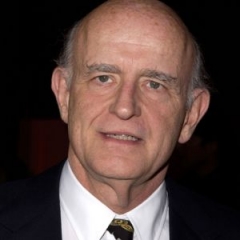
2006 – Actor Peter Boyle died of multiple myeloma at the age of 71.
His many movie roles included Taxi Driver, The Candidate, Young Frankenstein, but he may be best known for his role in Everybody Loves Raymond.
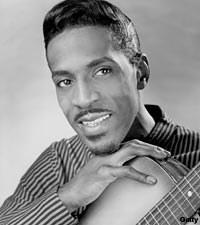
2007 – Ike Turner died from a cocaine overdose combined with hypertensive cardiovascular disease and pulmonary emphysema. He was 76.
Turner was the guitarist with the Kings of Rhythm – Rocket 88′ {written by Turner but credited to Jackie Brenston & His Delta Cats} and later the musical partner with then wife Tina (Proud Mary).
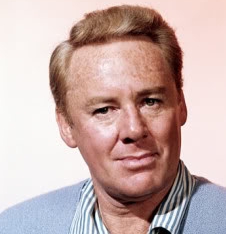
2008 – Actor Van Johnson died of natural causes at the age of 92.
He appeared in over 60 films during his illustrious career, including The Caine Mutiny, A Guy Named Joe, Thirty Seconds Over Tokyo and The Human Comedy.
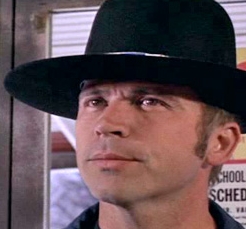
2013 – Actor Tom Laughlin died of complications from pneumonia at the age of 82.
He was best known for his series of Billy Jack films.
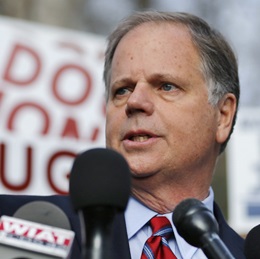
2017 – Doug Jones won a U.S. Senate special election in Alabama, becoming the first Democrat to win a Senate seat in Alabama since 1992.
Jones, a former U.S. Attorney for the Northern District of Alabama, defeated Republican Roy Moore, a former Chief Justice of the Supreme Court of Alabama, to fill a vacancy in the U.S. Senate, arising from the resignation of Sen. Jeff Sessions to serve as the United States Attorney General.
Compiled by Ray Lemire ©2019 RayLemire.com / Streamingoldies.com. All Rights Reserved.